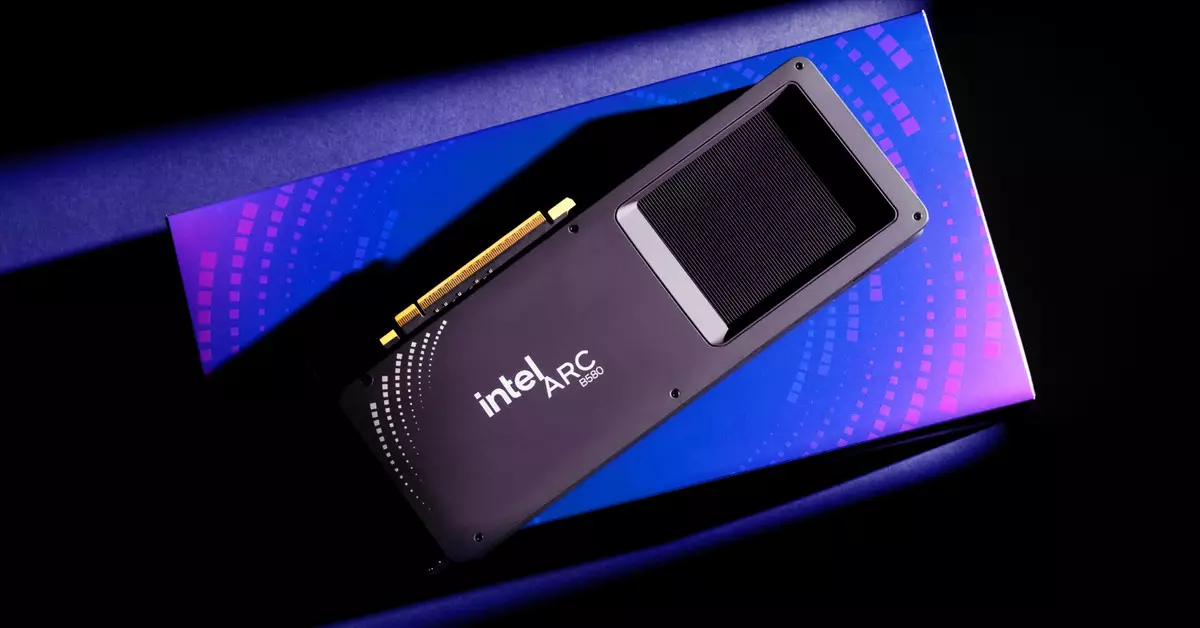In a year marked by significant challenges for Intel, the company’s discrete graphics card initiative has finally introduced a product that has captured attention and reviews. The Arc B580 GPU, affectionately termed “Battlemage,” has arrived in the midst of a competitive market dominated by established players like Nvidia and AMD. Despite initial hurdles, its launch has generated what can only be described as a wave of enthusiasm from early adopters and industry experts alike. This article will delve into the triumphs and ongoing challenges Intel faces with the Arc B580 graphics card.
The Arc B580 has not only shown promise but has also set itself apart from its competitors. At a price point of $250, it has garnered exceptional praise, marking a departure from the predominantly negative feedback received by both the NVIDIA RTX 4060 and AMD RX 7600 from the previous year. The latter two graphics cards failed to generate excitement, mainly due to inflated prices and lackluster performance that left consumers feeling cheated. Reports have even likened the RTX 4060 to a “wet fart” in the GPU landscape, contrasting sharply with the B580, which has been heralded for its affordability and features.
Although the B580 is not always the top performer—especially at 1080p resolutions—it does tend to outpace its competition in many scenarios. Reviewers have pointed out that while it may falter in some demanding titles compared to the 4060 or RX 7600, the overall value proposition, owing to its mature drivers and 12GB of video memory, makes it an attractive choice for those who want high-quality graphics without breaking the bank.
The Demand Dilemma
A significant aspect of the B580’s launch is the overwhelming demand it has generated, leading to rapid sell-outs across various retail platforms. Intel has acknowledged the situation, promising that they are working tirelessly to replenish stocks weekly. Mark Anthony Ramirez, an Intel spokesperson, remarked on the high demand, indicating that retailers have struggled to maintain inventory levels in the face of consumer interest. This phenomenon suggests that the B580 is filling a vital gap in the market for affordable, competent graphics solutions.
The insistence by industry commentators that this is not merely a “paper launch”—where companies notoriously release limited products for show rather than substantial supply—adds credibility to Intel’s claims. Hardware Unboxed analyst Steve Walton noted the anticipation for robust supplies, bolstering the perception of the B580 as a legitimate contender.
Challenges and the Road Ahead
However, even in success, Intel must navigate turbulent waters. Both AMD and Nvidia are rumored to be preparing their next-generation GPUs, which could reshape market dynamics. As these competitors gear up for their respective launches, Intel’s timing in bolstering its supply chain will be crucial. The robust performance and competitive pricing of the B580 have certainly made it a worthy contender, but whether Intel can sustain this momentum in the face of emerging competition remains uncertain.
Newegg and other retailers are already signaling restocks for various models, including a more affordable Acer option priced at $279. Still, consumers who missed the initial launch may find themselves shelling out higher prices for available models, such as some Gunnir variants floating around the $400 price point.
While the Arc B580 represents a significant milestone for Intel, the company should not rest on its laurels. The initial success serves as both an encouragement and a testament to the demand for quality GPUs at reasonable pricing. If Intel can manage to secure future stocks and continue to deliver a reliable product, it may invigorate their position in the competitive GPU market against giants like Nvidia and AMD.
As the narrative unfolds, it is crucial for Intel to not only focus on production and distribution but also on maintaining the quality delivery that has won it praise. The Arc B580 could very well mark the beginning of a new chapter for Intel in the graphics card arena—one that appropriately reflects consumer needs and market realities.


Leave a Reply